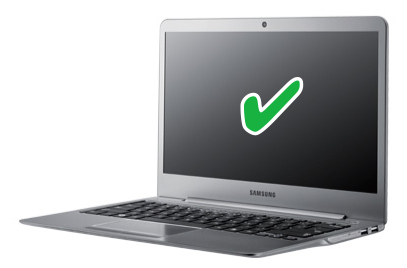Ultrabook is going to confuse buyers

What is an Ultrabook? After watching the endless coverage of the CES and seeing dozens of them unveiled you would think it would be clear, but it's anything but that. Thin, light notebooks are Ultrabooks, right? Thin, light notebooks with solid-state drives for performance are Ultrabooks, right? Thin, light notebooks with SSDs and long battery life are Ultrabooks, right? The correct answer is: it depends on who you ask.
Take the Samsung Series 9 "Ultrabook" that made my top pick of those debuting at the CES. According to Samsung it is not an Ultrabook. The cheaper, slightly thicker Series 5 that Samsung also rolled out at the CES is an Ultrabook. Take a look at the pictures above and see if you can spot what makes one of them an Ultrabook and the other not. Not so easy, is it? Apparently the Series 9 is thinner and lighter, and because it is a better notebook is costs more. That's enough to knock it off the Ultrabook pedestal according to Samsung.
When Intel made up the Ultrabook term, it used $1,000 as the mark for OEMs to hit to fit the designation. Unfortunately that price point is only just now getting hit by OEMs, so it's kind of arbitrary if a notebook is a genuine Ultrabook or not.
The price point is not a hard and fast criterion anyway, as some notebooks that sell for more than $1,000 are still being marketed by the OEM as Ultrabooks. The Lenovo IdeaPad U300s I reviewed (left) sells for almost $1,600 in its top configuration and is still an Ultrabook. It's almost $1,200 in its low-end configuration so it's not even close to hitting Intel's criteria. But it is still an Ultrabook according to Lenovo.
The Lenovo IdeaPad U260 (orange laptop, right) is almost as thin and light as the U300s, and is a fair bit cheaper. It's not an Ultrabook, however, even though similarly configured to the one that is. A bit confusing indeed.
Another criterion that Intel designated for Ultrabooks is the use of an SSD for performance and battery life gains. Apparently that's not a hard criteria either as some Ultrabooks shown off at CES are using conventional spinning HDDs to keep the cost down. Others are using HDDs with flash cache (hybrids) for the same reason. Using HDDs flies in the face of two primary criteria for Ultrabooks according to Intel, battery life and system performance. It makes you wonder if OEMs start calling thick and heavy laptops Ultrabooks, what will Intel do?
It seems that none of the criteria, other than thin and light, are really required to determine what is an Ultrabook and what isn't. It's also apparent that Intel is leaving it up to the OEMs to choose to market products as Ultrabooks or not. I predict we will have a confused bunch of consumers before too long as it becomes evident the Ultrabook designation doesn't really mean anything. Even worse, if OEMs start saving the Ultrabook designation for their cheap laptops and leaving it off their good thin and lights, it's going to get a negative image in the marketplace.
Image credit: Samsung; CNET Sarah Tew
Related:
- Samsung raises design bar with Series 9 laptop
- Intel plays up user experience over hardware on Ultrabooks
- CES 2012: Who will connect your future television? With Smart TV, LG fails to break from pack
- What you won’t see at CES: E-book readers
- LG joins Google TV family, while Samsung, Sony, Vizio promise new Google TV devices for 2012
- HDTV shipments with larger screens and LCD to grow in 2012 (report)
